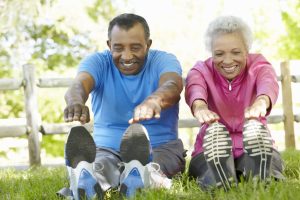A physically active lifestyle has been linked to a host of health benefits, including a reduced risk for various chronic diseases and a longer, healthier life. The U.S. Department of Health and Human Services notes that moving more and sitting less benefits people regardless of their age, sex, race, ethnicity, or even current fitness levels.

Whether they’re adapting to a more physically active lifestyle, already physically active, or somewhere in between, individuals can benefit from recognizing the latest physical activity guidelines from the DHHS.
Adults
The DHHS notes that substantial health benefits can be gained when adults do between 150 and 300 minutes of moderate-intensity aerobic activity each week or between 75 and 150 minutes of vigorous aerobic activity each week. The DHHS notes that aerobic activity, which can include walking, running, cycling, and hiking, among other activities, should be spread out over the course of the week. In addition to aerobic activity, the DHHS urges adults to do muscle-strengthening activities of moderate or greater intensity on two or more days per week.
Older adults
The DHHS recommends older adults adhere to the same guidelines as younger adults but take some additional steps as well. Older adults are urged to incorporate multicomponent physical activity that includes balance training into their fitness regimens. The DHHS also advises older adults to determine their level of effort for physical activity relative to their fitness level. It’s also recommended that older adults with chronic conditions discuss their ability to engage safely in regular physical activity with their physicians. Vigorous- and even moderate-intensity exercise may not be possible for some older adults with existing conditions.
Routine physical activity can help adults and older adults live longer, healthier lives. Adults of all ages are urged to speak with their physicians about safe ways to become more physically active.






